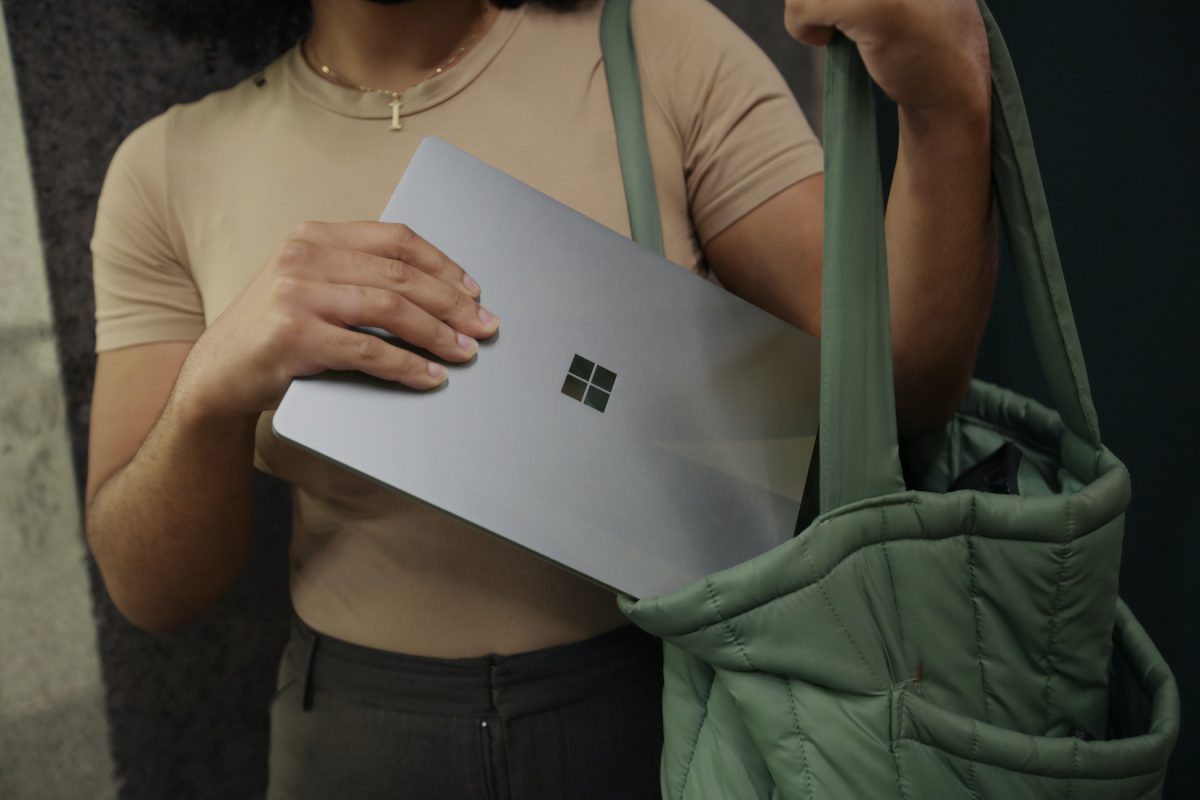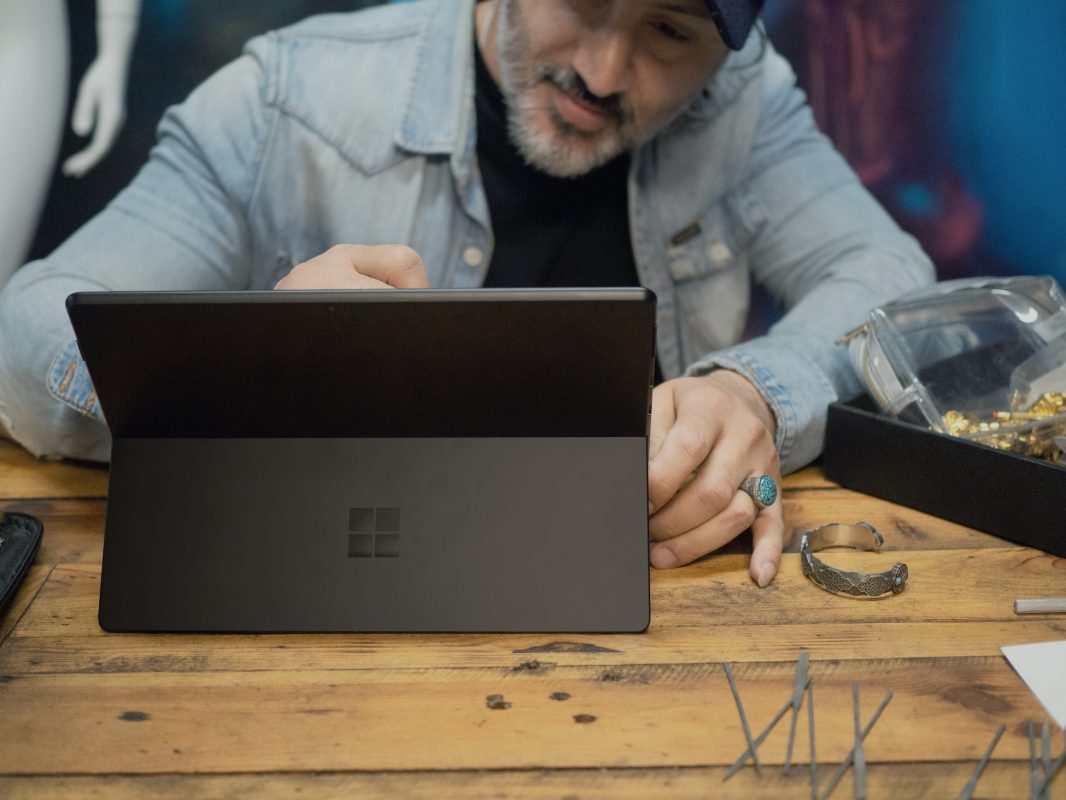Welcome to the ultimate guide on Junior ISAs—where financial savvy meets a dash of wit and a whole lot of empowerment. Imagine setting your child or young family member up with a money-making machine that not only grows their savings tax-free but does so with a style that even your favorite influencer would envy. In this ride through the world of Junior ISAs, we’ll break down everything from benefits and fees to the nitty-gritty of rates and key information in language that’s as fresh as your morning coffee. Ready to level up your financial game while keeping it chill? Let’s dive in!
Junior ISA: Benefits, Fees, Rates & Key Information Table of Contents
Understanding the Junior ISA: A Modern Savings Revolution
The Benefits of Opening a Junior ISA
Decoding the Fees: What You Need to Know About Junior ISA Costs
Unlocking the Mystery of Rates: How Interest Rates and Returns Work for Junior ISAs
Key Information You Need Before Diving Into a Junior ISA
Your Step-by-Step Guide to Opening a Junior ISA
Expert Tips for Maximizing Your Junior ISA
Resources and Community Support: Your Next Steps
Understanding the Junior ISA: A Modern Savings Revolution
So, what exactly is a Junior ISA? In simple terms, a Junior Individual Savings Account (ISA) is a tax-free savings account designed exclusively for young people. Whether you’re a parent looking to invest in your child’s future or a cool grandparent keen on being the MVP of saving, the Junior ISA is your go-to tool for building a nest egg without worrying about the taxman.
Unlike regular savings accounts that might charge you fees and be subject to tax deductions, a Junior ISA lets any interest, dividends, or capital gains accumulate without interference. It’s like sneaking into a VIP lounge where your money gets all the perks. With tax benefits, flexibility, and a focus on long-term savings, Junior ISAs have become a cornerstone for families investing in the future of the next generation.
One of the coolest aspects of Junior ISAs is that once your child turns 18, the account automatically transitions into an adult ISA, handing them over the keys to a tax-efficient savings world. It’s the perfect stepping stone for young people who are just starting out on their financial journey, whether they’re planning for university, a first apartment, or that adventurous round-the-world trip.
While different providers offer variants such as cash Junior ISAs and stocks & shares Junior ISAs, each version has its own set of rules and potential returns. This guide aims to help you navigate the pros and cons of each option, so you can choose the one that best aligns with your financial goals and risk appetite.
Ready to get into the nitty-gritty of how Junior ISAs stand apart from other savings vehicles? Keep scrolling to unlock the details that will have you and your future financial whiz nodding in approval.
The Benefits of Opening a Junior ISA
When it comes to saving for the future, Junior ISAs come loaded with advantages that make them a no-brainer for financially minded families. Here’s why you should consider putting your money in one of these nifty accounts:
Tax-Free Growth
Imagine watching your savings blossom without the nagging worry of taxes eating into your hard-earned cash. With a Junior ISA, any interest, dividends, or capital gains are all yours to enjoy—completely tax-free. In a world where every penny counts, having a vehicle that lets your money work for you without the taxman taking a cut is a game changer.
Long-Term Financial Security
A Junior ISA isn’t just about stashing money away; it’s about building a solid foundation for a bright financial future. Whether the plan is to fund higher education, launch a small business, or simply offer a financial cushion as your child steps into adulthood, the long-term benefits are palpable. With compound interest at play, even modest contributions can snowball into significant amounts over the years.
Flexibility in Investment Choices
The world of Junior ISAs isn’t one-size-fits-all. Depending on your comfort level with risk and your financial goals, you can choose from cash Junior ISAs or stocks & shares Junior ISAs. A cash Junior ISA provides stability and security—ideal for those who prefer a safe, steady growth. Meanwhile, a stocks & shares Junior ISA offers higher potential returns by investing in the stock market, albeit with the natural ups and downs that come with it. This flexibility allows you to align your investments with your unique financial strategy.
Encouraging Financial Responsibility
Beyond the numbers, a Junior ISA teaches young savers the value of money from an early age. It’s an educational tool that fosters a sense of financial responsibility, budgeting skills, and long-term planning. When your child eventually gains control of the account at 18, they’ll have a head start on managing personal finances smartly—setting them up for a lifetime of financial mindfulness.
Simple Setup and Management
Opening a Junior ISA is refreshingly straightforward. With minimal paperwork and digital-friendly processes, managing the account becomes a breeze. Many providers offer intuitive online platforms that make tracking deposits, monitoring growth, and adjusting investment strategies as easy as scrolling through your favorite social media feed.
To sum it up, the benefits of a Junior ISA extend far beyond basic savings. They’re a robust tool for growing money intelligently, prepping the next generation to be financially independent, and doing it all while enjoying the perks of tax-free growth. In the grand scheme of building a financially resilient future, a Junior ISA stands out as an essential element.
Decoding the Fees: What You Need to Know About Junior ISA Costs
No one likes fees—they’re like the hidden ads in a free app that suddenly appear when you least expect it. When it comes to Junior ISAs, understanding the fee structure is essential for maximizing the benefits of your savings. While the promise of tax-free growth is enticing, a few fees can creep in, so let’s break down what you should be aware of.
First, it’s important to know that many providers offer Junior ISAs with low or even zero management fees, especially for cash accounts. However, if you opt for a stocks & shares Junior ISA, there may be fees associated with the management and administration of your investments. These fees typically cover the cost of professional fund management, platform maintenance, and other administrative services.
Common Types of Fees
- Management Fees: Applied as a percentage of the assets under management, these fees cover the day-to-day running of your account. They can vary by provider, so it’s always a good idea to compare rates before committing.
- Platform Fees: For those venturing into stocks & shares Junior ISAs, platform fees may come into play. These fees are charged by the online platforms that facilitate your investments, ensuring a seamless digital experience.
- Dealing Charges: Sometimes, when you buy or sell investments, a small dealing fee might be applied. While these fees are generally modest, they can add up if you’re an active trader.
- Exit Fees/Transfer Fees: Should you decide to switch providers or close the account, certain fees might be incurred. It’s crucial to review the fine print to know what to expect should you decide to transfer your funds.
It’s worth noting that transparency in fees is a major selling point for most reputable providers. Many platforms now highlight all charges in a clear, upfront manner, so you’re never caught off guard. When comparing Junior ISA options, look for those that offer low management fees, especially if you’re considering a stocks & shares account, where the potential for greater returns might be slightly tempered by higher costs.
Keeping fee structures in mind, it’s essential to balance them against potential returns. A slightly higher fee might be worth it if it comes with superior customer support, better investment options, or advanced digital tools for managing your account. The goal is to ensure that your savings grow optimally, with fees chipping away as little as possible at your future wealth.
Ultimately, while fees are an inevitable aspect of investing, understanding them in depth can empower you to pick a Junior ISA that maximizes your child’s financial potential with minimal cost interference. It’s all about keeping more of what you earn and watching your savings flourish over time.
Unlocking the Mystery of Rates: How Interest Rates and Returns Work for Junior ISAs
Let’s talk rates. No, we’re not discussing the speed of your Wi-Fi connection—although fast internet is pretty neat too. We’re diving into the world of interest rates and investment returns, and how they play a vital role in the effectiveness of your Junior ISA.
In a cash Junior ISA, the rate is typically the interest rate applied to your stored cash, much like a high-yield savings account. This rate can vary depending on market factors and the provider’s policies, but the key point is that the interest earned is completely tax-free. Over time, this compound interest can add up significantly, especially if you start early and contribute consistently.
For those opting for stocks & shares Junior ISAs, the “rate” isn’t a fixed percentage; rather, it’s all about the performance of the investments within your account. Of course, this means you have the potential to achieve higher returns, but it also carries the risk of market fluctuations. The beauty of this option is that your money is working hard in the stock market, potentially earning dividends, capital gains, and other returns without the drag of taxes.
Factors That Influence Rates and Returns
- Market Conditions: In a bullish market, investments can see robust growth, while a bear market might temper expected returns. Timing isn’t everything, but starting early does help smooth out the rollercoaster ride.
- Account Type: Cash Junior ISAs tend to offer stable, albeit modest, interest rates. Meanwhile, stocks & shares accounts rely on market performance, meaning your experience can vary based on economic trends.
- Compounding Periods: The frequency at which interest compounds can significantly increase the total growth of your savings. Even if the rate is moderate, regular compounding over years pushes your totals higher.
- Provider Offerings: Different banks and financial institutions offer varying rates based on their strategies and market positioning. It behooves you to compare current rates so you can strike the right balance between security and potential high returns.
One of the coolest aspects of Junior ISAs is their ability to harness the power of compounding. That’s right—by reinvesting the interest and potential returns back into your account, every little bit helps as time works its magic. Starting young means that even if the interest or returns aren’t astronomical, the cumulative effect over decades can be nothing short of impressive.
Of course, no one can predict the future with absolute certainty. However, armed with the right knowledge about how rates work and an understanding of the inherent risks and rewards, you can make a more informed decision. Whether you’re all about that safe, steady growth or you’re prepared to ride the exciting waves of the stock market, understanding these variables lets you tailor your Junior ISA to your financial goals.
In the grand scheme of financial planning, rates are not the only factor—but they sure are an important one. With the right strategy, even modest rates can turn into substantial wealth over time. So, buckle up, get familiar with your options, and let your money do the heavy lifting while you enjoy the ride!
Key Information You Need Before Diving Into a Junior ISA
Before you click “Apply Now” on that shiny Junior ISA offer, there are some must-know details to consider. It might sound like boring legal mumbo jumbo, but knowing the basics will help you avoid any nasty surprises down the line—and trust us, knowledge is power.
Eligibility and Age Requirements
Junior ISAs are designed for individuals under 18, meaning that whether it’s your child, niece, nephew, or even a future super-genius in your extended family, these accounts are meant to build their financial future. The account is usually opened and managed by a parent or guardian until the child reaches 18, at which point the account transitions into an adult ISA. It’s important to keep in mind that while the funds are set aside for the child, it’s the guardian’s responsibility until the legal age is reached.
Contribution Limits
One of the few rules you’ll actually want to follow is the contribution limit imposed on Junior ISAs. Each tax year comes with a maximum amount you can deposit into the account. Although this cap might seem restrictive, it’s designed to keep everything in check and ensure that the tax-free benefits are sustainable over the long haul. Double-check the current year’s limit before planning your contributions—you wouldn’t want to miss out on a chance to supercharge your child’s savings.
Transfer Rules and Flexibility
Flexibility is key when it comes to savings vehicles, and Junior ISAs offer a decent amount of leeway. If you’ve already opened an account through one provider and later find a better offer elsewhere, you can transfer your funds without losing any tax benefits. Keep an eye on any potential transfer fees and make sure to understand the process before making a move.
Control and Accessibility
While you’re in charge of the Junior ISA until your kid hits adulthood, it’s essential to know the rules regarding accessibility. Often, the funds are locked away—until the beneficiary is old enough to manage them. This restriction is in place to protect their young savings from spur-of-the-moment decisions, ensuring that the money is reserved for long-term goals like further education, a first deposit on a home, or even starting a business.
Keeping all this key information in mind will allow you to confidently select the Junior ISA that best fits your family’s financial goals. It pays to read the fine print and know exactly what you’re agreeing to before you take the plunge.
Whether you’re a first-time saver or a seasoned financial guru, understanding these details empowers you to make informed decisions and set your Junior ISA on a path to success. Knowledge, after all, is the first step in building a bright, tax-efficient future.
Your Step-by-Step Guide to Opening a Junior ISA
Ready to take the plunge and open a Junior ISA that could one day set your child up for financial brilliance? Follow this easy, step-by-step guide, and soon you’ll be navigating the world of tax-free savings like a pro.
Step 1: Research and Compare Providers
First things first: take a little time to research the different providers out there. From traditional banks to digital-first fintech platforms, each option offers its own unique blend of features, rates, and fees. Check out online reviews, compare interest rates, and investigate the specific benefits provided by each institution. The goal here is to find an account that offers transparency, low fees, and a user-friendly platform.
Step 2: Gather All Required Documents
Once you’ve selected your provider, make sure you have all the necessary documentation on hand. This typically includes proof of identity for both the child and the guardian, proof of address, and sometimes additional paperwork depending on the institution’s requirements. Being prepped with the right documents means the application process will be smooth sailing.
Step 3: Complete the Application
With your docs in order, fill out the application form—either online or on paper. This step is usually as straightforward as entering your personal info and agreeing to the terms and conditions. Make sure you read everything carefully, and don’t hesitate to reach out to customer support if any questions pop up.
Step 4: Fund the Account
After your application has been approved, you’re ready to fund the Junior ISA. Whether you choose to make a one-off deposit or set up regular contributions, remember that these funds will benefit from tax-free growth over time. It’s not just about saving; it’s about investing in a secure future.
Step 5: Monitor and Manage
Once your Junior ISA is up and running, take advantage of digital tools and online dashboards provided by your bank or platform. Regular monitoring helps you track your contributions, interest earned, and overall account performance. This proactive approach not only makes managing the account easier but also teaches young savers the importance of staying engaged with their financial journey.
Following these steps ensures you’re setting up a Junior ISA that’s tailor-made for success—providing both security and growth potential. It’s an empowering process that puts you in the driver’s seat of planning for a financially resilient future.
Expert Tips for Maximizing Your Junior ISA
While opening a Junior ISA is a great first step, making the most of it requires a bit of savvy financial planning. Here are some expert tips to help you optimize your savings and ensure that every penny has the potential to grow over time.
Start Early and Contribute Regularly
The magic of compounding interest is most potent when you start early. Even small, regular contributions can lead to significant growth over the years. Set up an automatic transfer to your Junior ISA account each month. This way, even on busier days, your future remains secure without requiring much effort.
Diversify Your Investments
If you’re comfortable with a bit of risk, consider a stocks & shares Junior ISA to potentially boost returns. Diversification across different asset classes—such as bonds, equities, or even environmentally focused funds—can cushion against market fluctuations. Remember, diversification is like mixing your favorite music genres; it creates a more balanced and enjoyable playlist.
Keep an Eye on Fees
Even small fees can eat into your returns over time. Be sure to review and compare fee structures across providers periodically. Opting for lower fees gives your investment more room to grow. Don’t let hidden charges spoil your financial jam session!
Review Performance Annually
Set a yearly reminder to review your Junior ISA’s performance. Check if your chosen provider’s rates and fees remain competitive, and evaluate whether a transfer might be beneficial. Staying informed and proactive helps you adjust your strategy as needed.
Educate Your Future Financial Leader
Use this savings vehicle as an educational tool. As the account eventually transitions to your child, explain how compound interest works and why smart investments matter. Empower your future financial leader with knowledge—they’ll thank you later when making big decisions about their money.
By keeping these tips in mind, you’re not just investing in a Junior ISA—you’re investing in a lifetime of financial smarts, resilience, and the freedom to make choices that support a thriving future.
Resources and Community Support: Your Next Steps
Financial wellbeing, especially when it comes to planning for the next generation, is best tackled as a community effort. Luckily, there are plenty of resources and communities online that can equip you with the latest insights, top tips, and real-life experiences surrounding Junior ISAs.
Consider joining financial forums, Facebook groups, or even following influencers who specialize in budgeting, investing, and financial planning for families. These communities can offer everything from detailed reviews of different Junior ISA providers to insider strategies on optimizing contributions and managing fees. In many cases, members share personal success stories, practical advice, and cautionary tales that help you navigate the sometimes complex world of financial products.
Additionally, numerous websites and blogs provide regularly updated guides and tutorials on understanding interest rates, the benefits of tax-free growth, and comparative analyses of available products. Independent financial advisors often host webinars or Q&A sessions which can offer valuable insights, no matter if you’re just starting or already actively building your child’s savings portfolio.
Online calculators and budgeting tools are also available and can help you forecast future growth or simply manage your current contributions more effectively. Whether it’s projecting potential returns or calculating the impact of compounding interest over decades, these digital tools serve as a practical extension of your financial planning arsenal.
Finally, don’t underestimate the power of traditional advice. Local financial advisors or community groups often host workshops that distill complex financial concepts into engaging, practical sessions. In these supportive environments, you can ask questions, exchange ideas, and gain clarity on anything from fee structures to market trends.
By tapping into these resources and joining a community of like-minded savers, you’re making your next steps in the Junior ISA journey not just about accumulating funds but also about building financial confidence and knowledge. It’s all about creating a network that supports your journey to becoming financially unstoppable—one informed decision at a time.
Junior ISA FAQs: Your Questions Answered
Let’s address some frequently asked questions that pop up when diving into the world of Junior ISAs. We know there’s a lot to digest, so here are the answers to the questions we hear most.
1. What is a Junior ISA?
A Junior ISA (Individual Savings Account) is a tax-free savings account specifically designed for children and young people under the age of 18. It allows savings to grow without being diminished by taxes and transfers into an adult ISA once the holder reaches 18.
2. Who is eligible to open a Junior ISA?
Junior ISAs are open to UK residents under the age of 18. Typically, a parent or legal guardian opens and manages the account until the beneficiary reaches adulthood.
3. What are the contribution limits for a Junior ISA?
Contribution limits are set annually by the government. While these limits can change from year to year, it’s important to stay updated with the current threshold to make sure you don’t exceed the permitted amount.
4. What types of Junior ISAs are available?
There are mainly two types of Junior ISAs: cash Junior ISAs, which operate like traditional savings accounts with guaranteed interest, and stocks & shares Junior ISAs, where your money is invested in various assets offering the potential for higher returns.
5. Are there any fees associated with Junior ISAs?
Many providers offer low or no-fee Junior ISAs, especially with cash options. Stocks & shares accounts might include management, platform, or transaction fees. Always review the fee structure before opening an account.
6. Can I transfer an existing Junior ISA from one provider to another?
Yes, transfers are generally allowed. However, it’s essential to check if there are any transfer fees or restrictions when moving your funds from one provider to another.
7. What happens to a Junior ISA when the child turns 18?
Once the child reaches 18, the Junior ISA automatically converts into an adult ISA, and the account holder gains full control of the funds.
8. How do interest rates affect my Junior ISA?
For cash Junior ISAs, interest rates determine the growth of your savings. In stocks & shares accounts, market performance drives your returns. Both scenarios benefit greatly from tax-free compounding over time.
9. Can I withdraw money from a Junior ISA before adulthood?
Generally, funds in a Junior ISA are locked until the beneficiary turns 18. This helps to ensure the savings are used for long-term goals.
10. How can I monitor the performance of a Junior ISA?
Most providers offer online dashboards and digital tools that let you track your account’s performance, view contributions, and monitor growth—all in real time.
Your Journey to Junior ISA Mastery
The world of Junior ISAs is as exciting as it is empowering. By providing a secure, tax-efficient way to start building a young person’s financial foundation, these accounts are a cornerstone in shaping a future filled with smart money choices and lasting security.
As you’ve discovered, a Junior ISA isn’t just another savings account—it’s a dynamic tool that brings together the ease of online management, the power of compounding interest, and even the chance to get a taste of investment strategies early on. It’s the ultimate blend of practicality and future-forward thinking.
Whether you’re a parent, guardian, or even a relative wanting to give a head start in life, understanding the benefits, fees, and rates associated with Junior ISAs can make a significant difference. With the right choices, your child will have a robust financial platform that evolves with them as they grow. This guide has armed you with insights, practical steps, and expert tips to navigate every twist and turn of the Junior ISA landscape.
So, take a deep breath, channel your inner financial guru, and embark on this journey with confidence. Every wise contribution you make today is a stepping stone towards a brighter, more secure future tomorrow. Now, it’s time to get out there and make the powerful decision to invest in the next generation’s financial success!
Here’s to building wealth, one smart decision at a time. Embrace the adventure of Junior ISA mastery and watch your savings—and your family’s future—grow beyond expectations.













